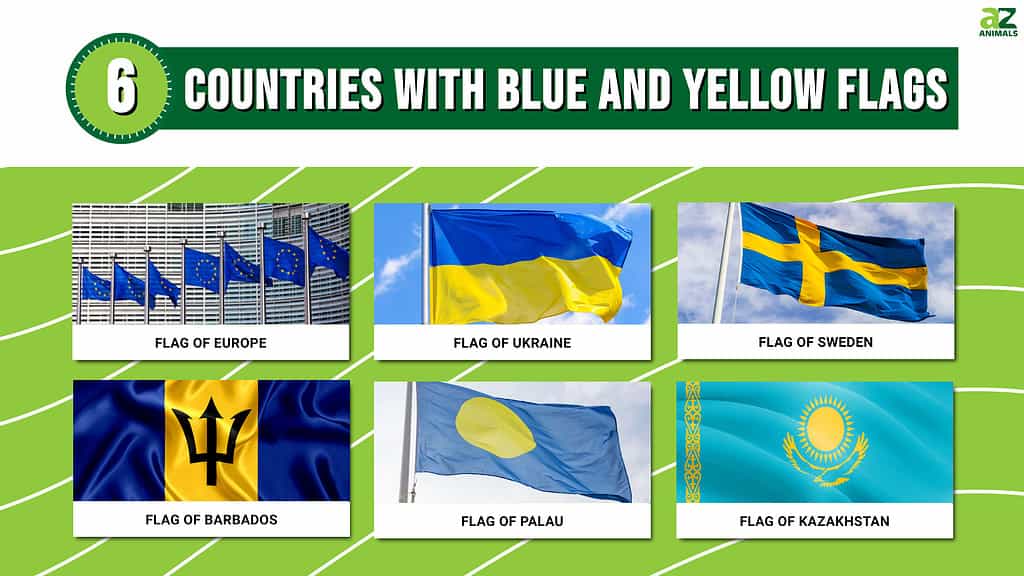
A country’s national flag is one of its most important symbols of identity. Flags come in various colors that symbolize different things about a country’s history, values, culture, and even geographical location. Blue and yellow (or golden yellow) are two colors that are quite common on flags. However, only a few national flags have only these two colors alone. This post lists countries with blue and yellow flags and what the color means.
The Flag of Europe

The flag of the Council of Europe is exclusively blue and yellow.
©iStock.com/Jorisvo
This is not a country flag per se. Rather, it is the flag used collectively by the Council of Europe or the European Union. The flag consists of a circle of twelve golden-yellow stars on a blue background. The flag was designed and adopted officially by the Council of Europe in 1955. The European flag is the official symbol of the 46 nations that are a part of the Strasbourg-based Council of Europe (CoE). The 12 yellow stars symbolize the people of Europe in the form of a circle or union. The golden color depicts the sun, which is a symbol of enlightenment and glory.
Asides from the European Union, many cities and local regions on the continent also use blue and yellow flags. Examples include the Polish City of Opole, which uses yellow and blue horizontal stripes (similar to that of Ukraine). The City of Austrians in Spain also has a yellow Cruz de la Victoria (Victory Cross) on a blue background. Other similarly colored flags in Europe include the flags of Durham County, Cheshire, East Lothian, and Central Macedonia in Greece. Some states in the United States, such as Alaska, Kansas, and Indiana, also have blue and yellow flags.
Ukraine
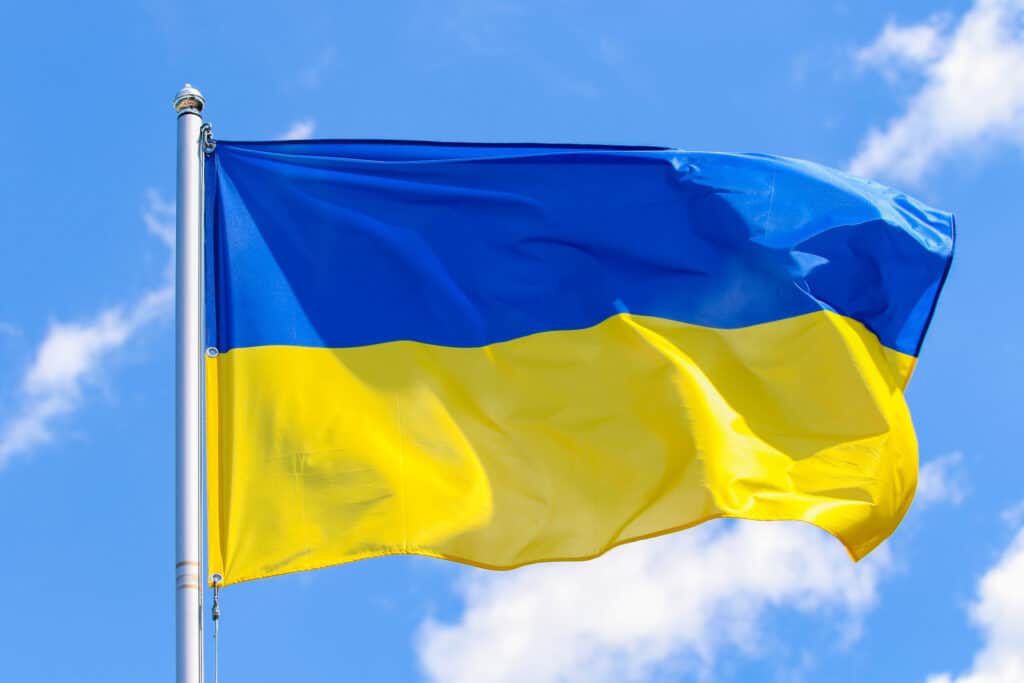
The flag of Ukraine has gained popularity in recent months as supporters of the country fly the flag in solidarity.
©iStock.com/olegda88
The Ukrainian national flag is one of the most recognizable flags in the world with a blue and yellow coloration. The flag consists of two equally sized bands with the blue band on top and the yellow band below. The simple bi-color design has been in use since 1848. However, there are times during the nation’s history when it was replaced by another flag as the national symbol, such as when Ukraine was a part of the Soviet Union. The blue and yellow flag was restored as the ceremonial flag in 1991 following the country’s independence and became the official national flag in 1992.
Sweden
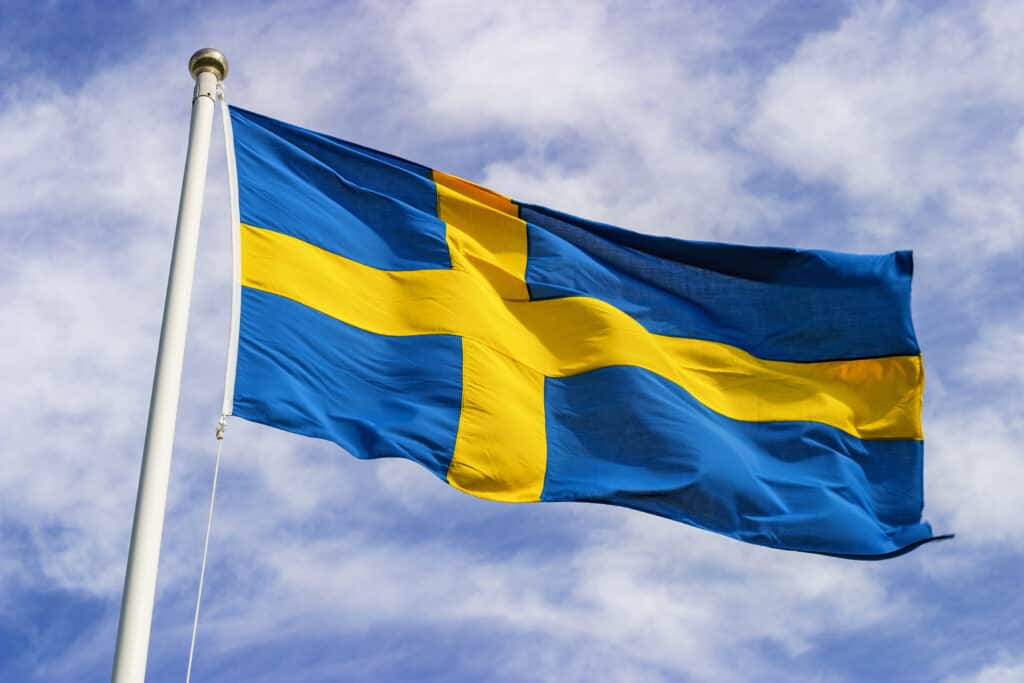
The Swedish flag features the Nordic cross.
©iStock.com/tt
The Swedish national flag consists of a yellow or gold-colored Nordic cross on a field of light blue. The horizontal yellow cross extends from one edge of the flag to the other. The crossbar is closer to the hoist of the flag than its center. The Nordic cross is a traditional symbol of Christianity, and its use on the flag is a religious reference. The current design of the flag is believed to have been inspired by the country’s coat of arms which is also of the same color. The Swedish flag may have also been modeled after the Danish flag. It is uncertain when the flag was first adopted. However, the oldest recorded photos of blue cloth with a yellow cross used as a flag in Sweden date back to the 16th century.
Barbados
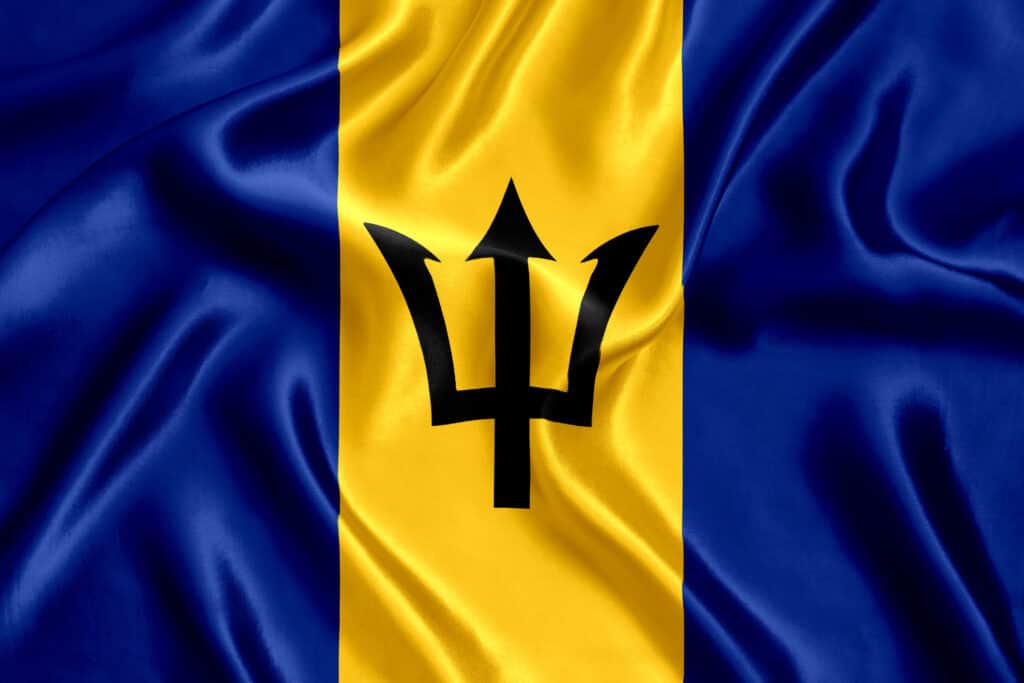
The flag of Barbados features a broken head of a spear of Poseidon.
©iStock.com/pavlofox
The national flag of Barbados is a triband flag with the outermost bands being blue (ultramarine) while the center band is yellow (or golden) in color. The flag was officially adopted in 1966 after a nationwide open contest to choose the nation’s new official symbol. Grantley W. Prescod won the contest out of more than a thousand entries.
The outermost blue bands represent the sky and the sea. The middle yellow band represents the sand. There’s a broken head of a Poseidon trident at the center of the flag. This trident is also present on the country’s coat of arms. It is a symbol of the severed ties between the island nation and the United Kingdom that colonized it for several years.
Palau
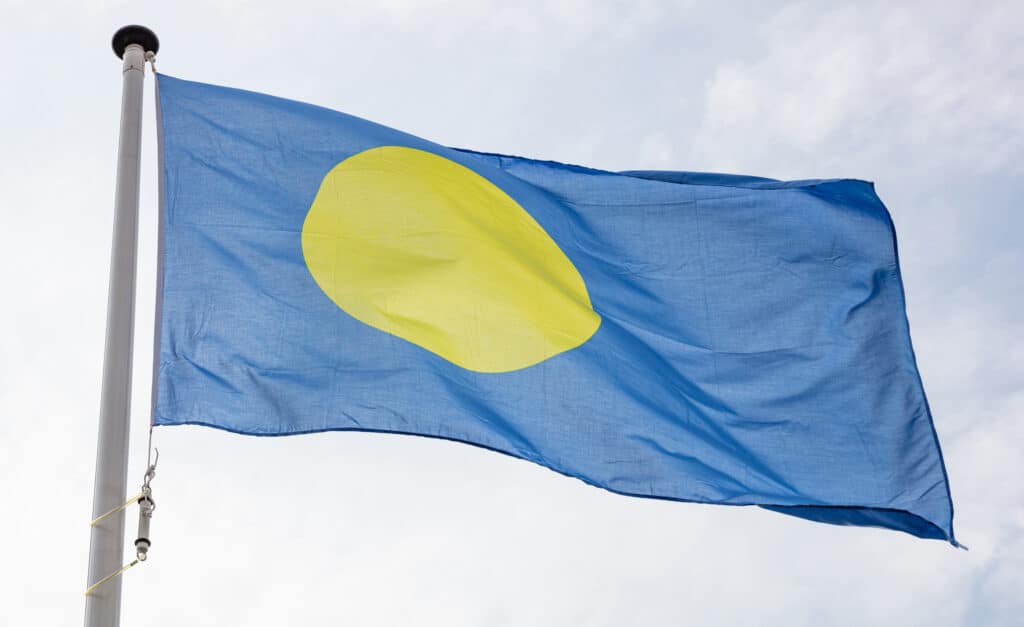
The flag of Palau features a softer blue and yellow.
©iStock.com/rawf8
Palau is a group of Islands located in the Micronesia region of the western Pacific Ocean. The more than 500 islands in the archipelago make up what is known as the Republic of Palau. The country’s national flag is a globe on a light blue background. As with many island countries, the blue background represents the waters of the Pacific Ocean. The yellow globe at the center depicts the moon. The globe, which is slightly displaced to the hoist-side, is considered an important symbol in the life of the islanders. The Republic of Palau officially adopted the symbol in 1981 when the island nation separated from the United Nations Trust Territory.
Kazakhstan
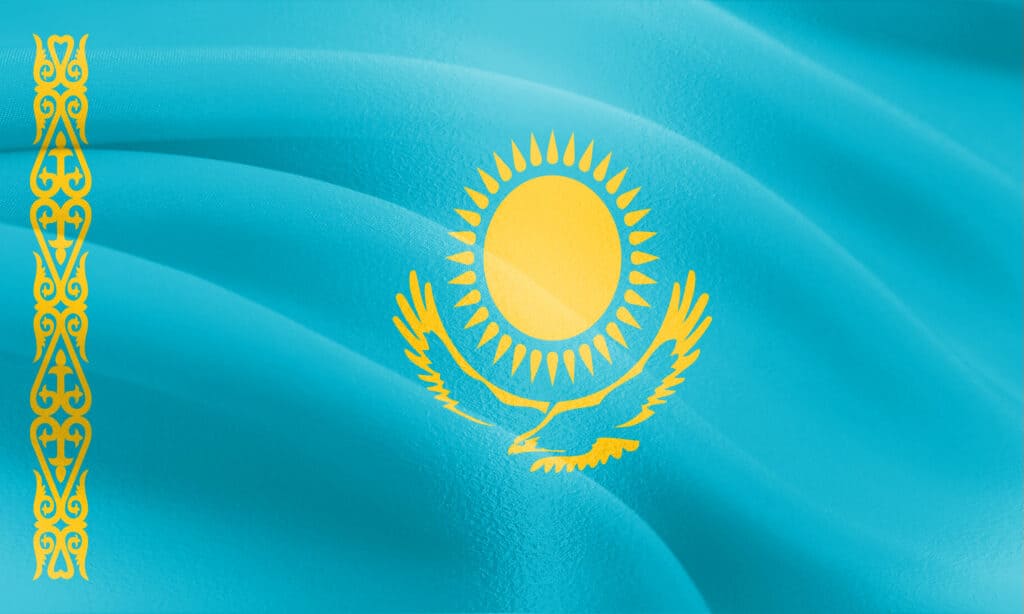
The flag of Kazakhstan is a vibrant aqua-blue shade, which makes it a more unique blue and yellow flag.
©iStock.com/imagoGY
Kazakhstan’s national flag consists of a golden eagle and a golden yellow sun on a sky-blue background. The sun has 32 rays and is placed above the golden eagle at the center of the flag. There’s also an intricate golden-colored ornamental pattern on the hoist side of the flag. This national ornamental pattern is known as the “Koshkar-muiz,” meaning the horn of the ram.
The people of Kazakhstan are believed to be descendants of the Blue-Horde Turkic-Mongols, a tribe of Mongols that lived in Central Asia many centuries ago. The ancient tribe flew the “Blue Banner,” and the country’s current flag references that ancient flag. The blue color represents the great skies. It is sometimes interpreted as a symbol of peace, well-being, and tranquility. The light blue flag was officially adopted in 1992. The golden sun and golden steppe eagle are symbols of the high ideals and freedom of the Kazakh people.
Conclusion
It is important to note that blue and yellow flags are not exclusive to countries. Many cities, regions, and even organizations use flags of these colors. In motor racing, for instance, a yellow flag is often used to warn drivers that another car is about to overtake them. Also, the famous Gadsden flag, otherwise known as the ‘Don’t Tread on Me’ flag, is a golden-yellow color.
Summary Of 6 Countries With Blue And Yellow Flags
| Rank | Country |
|---|---|
| 1 | The Flag Of Europe |
| 2 | Ukraine |
| 3 | Sweden |
| 4 | Barbados |
| 5 | Palau |
| 6 | Kazakhstan |
The photo featured at the top of this post is © iStock.com/tt
Sources
- Synonym.com, Available here: https://classroom.synonym.com/
- Soccer Gist, Available here: https://soccergist.net/2020/12/blue-yellow-flag-countries-states.html
- World Atlas, Available here: https://www.worldatlas.com/articles/flags-with-blue-and-yellow.html
- Wikipedia, Available here: https://en.wikipedia.org/wiki/List_of_flags_by_color_combination#Gold,_blue
Thank you for reading! Have some feedback for us? Contact the AZ Animals editorial team.






